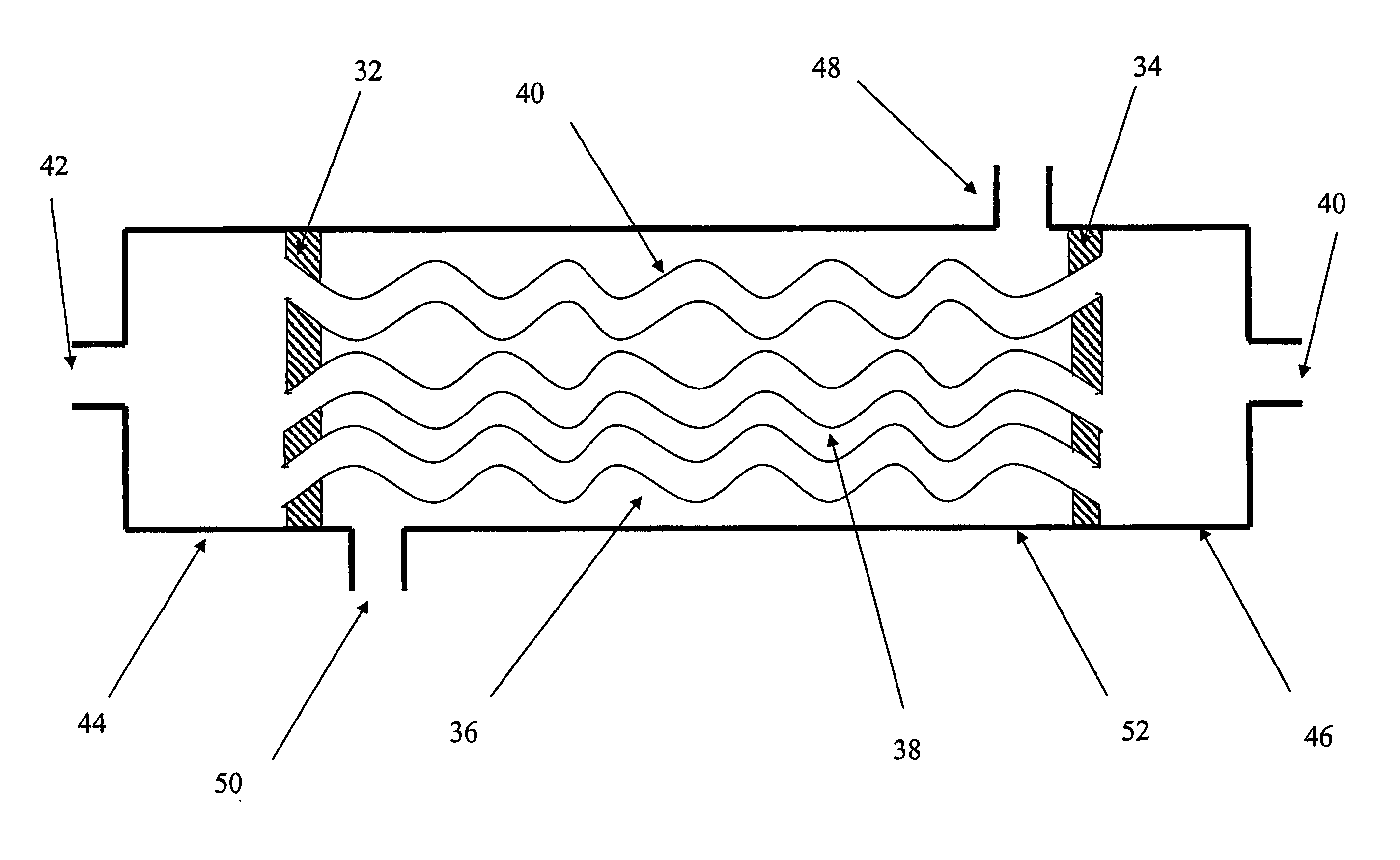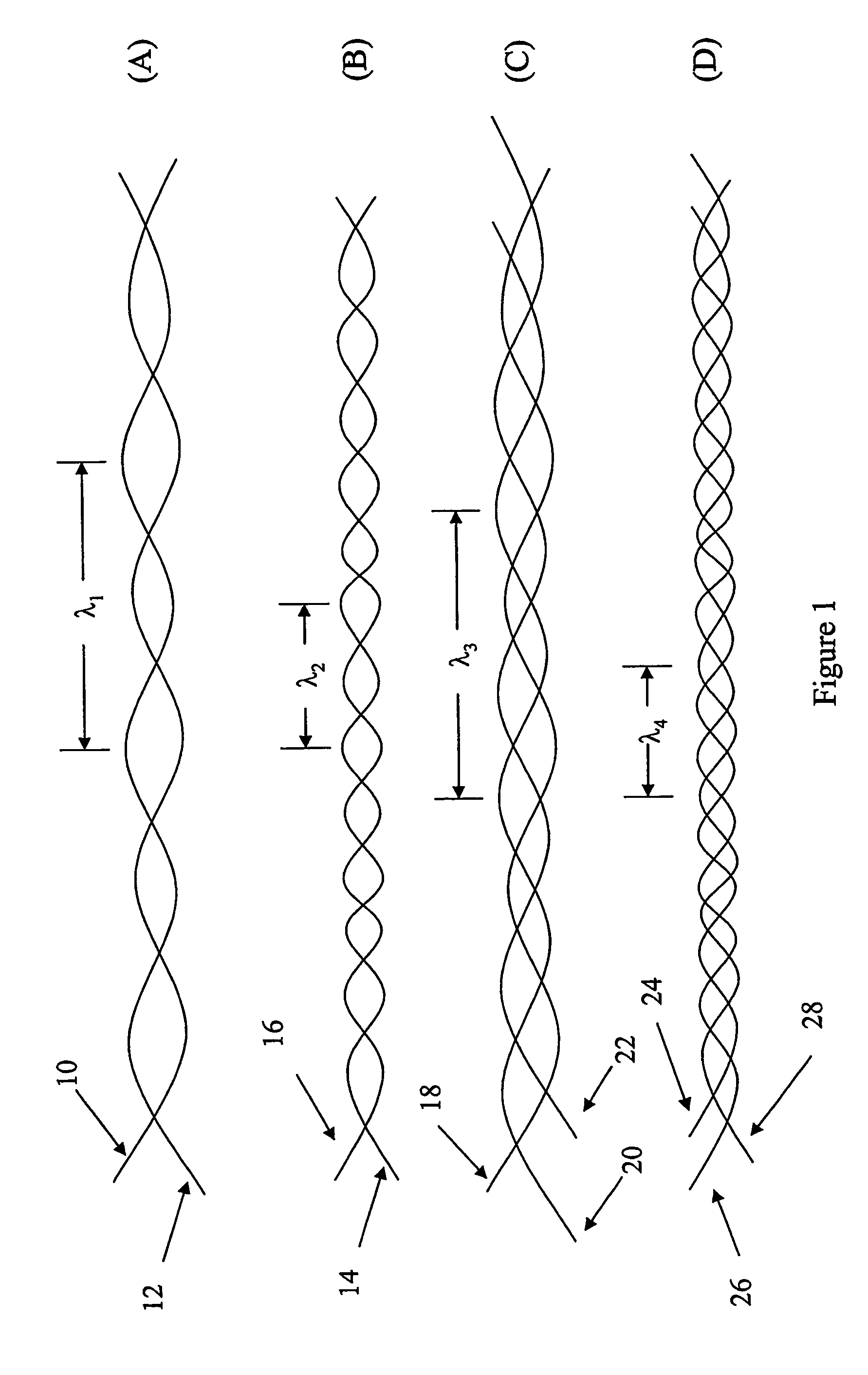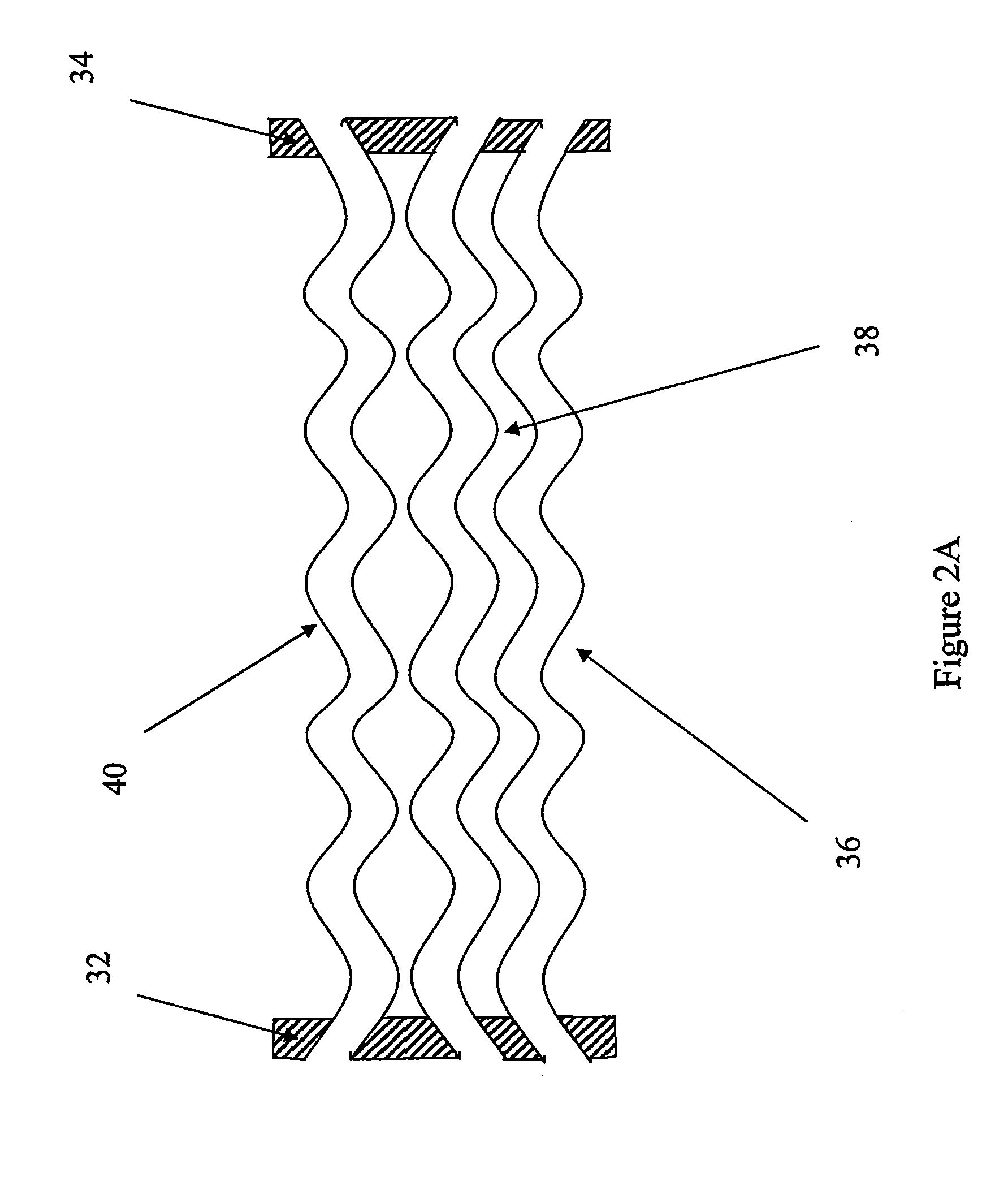Exchange apparatus
a technology of membrane exchange and hollow tube, which is applied in the direction of lighting and heating apparatus, membranes, separation processes, etc., can solve the problems of large volume of chemical or exchange fluid, large device occupying valuable space, and inability to exchange fluid, etc., to achieve enhanced fluid flow distribution and high packing density of hollow tubes or cords
- Summary
- Abstract
- Description
- Claims
- Application Information
AI Technical Summary
Benefits of technology
Problems solved by technology
Method used
Image
Examples
example 1
[0057]A prototype heat exchanger having a housing with a 1 inch inside diameter PFA tube was prepared by Procedure 1 except that the tubes were not twisted or annealed. The device contained 150 tubes of straight MFA tube measuring 15 inches in length.
[0058]The prototypes was tested under the following conditions. Hot water at a temperature of 63° C. was fed into the tube side of the device at a flow rate of approximately 1750 ml / min. Cold water at a temperature of 19° C. was fed into the shell side of the device at a flow rate of approximately 1070 ml / min. The hot and cold water paths flowed countercurrent to one another. The inlet and outlet temperatures and the flow rates were recorded every five minutes for the tube and shell side fluid streams for one hour. The results from this experiment are detailed in Table 1 shown in FIG. 6. Under these conditions the cold water was heated from 18.9° C. to 38.8° C. and a total of 1486 watts of energy was exchanged between the two fluids.
example 2
[0059]A prototype heat exchange apparatus having a housing with a 1 inch inside diameter PFA tube was prepared by Procedure 1 except that it contained about 150 hollow MFA tubes twisted together with about 12 twists per foot. The twisted cords were annealed on a metal rack to yield approximately 75 cords measuring about 15 inches in length.
[0060]The prototype was tested under the following conditions. Hot water at a temperature of 55° C. was fed into the tube side of the device at a flow rate of approximately 1650 ml / min. Cold water at a temperature of 19° C. was fed into the shell side of the device at a flow rate of approximately 1070 ml / min. The hot and cold water paths flowed countercurrent to one another. The inlet and outlet temperatures and the flow rates were recorded every five minutes for the tube and shell side fluid streams for one hour. The results from this experiment are detailed in Table 1 in FIG. 6. Under these conditions the cold water was heated to from 18.9° C. t...
example 3
[0061]This prospective example shows how a wafer processing tool including the exchange apparatus of this invention can be used to heat liquids used for cleaning semiconductor wafers.
[0062]An exchange apparatus having about 650 twisted hollow MFA tubes, 325 pairs, can be thermally annealed and fusion bonded in a 2 inch inside diameter PFA tube using the methods of Procedure 1. The length of the device can be about 18 inches and has a liquid volume of about 300 millliliters. The device is part of a wafer processing tool and is connected at its inlet fluid connection to an in-line to a source of aqueous 10% hydrochloric acid containing about 1 percent by volume hydrogen peroxide. The outlet of the exchange device is connected to a valve, optional stop suck back valve, and nozzle for dispensing the aqueous acid solution onto a substrate to be cleaned. One of the fluid inlet connections on the shell side of the exchange device is connected in-line to a source of hot water. Hot deionized...
PUM
| Property | Measurement | Unit |
|---|---|---|
| thickness | aaaaa | aaaaa |
| diameter | aaaaa | aaaaa |
| diameter | aaaaa | aaaaa |
Abstract
Description
Claims
Application Information
 Login to View More
Login to View More - R&D
- Intellectual Property
- Life Sciences
- Materials
- Tech Scout
- Unparalleled Data Quality
- Higher Quality Content
- 60% Fewer Hallucinations
Browse by: Latest US Patents, China's latest patents, Technical Efficacy Thesaurus, Application Domain, Technology Topic, Popular Technical Reports.
© 2025 PatSnap. All rights reserved.Legal|Privacy policy|Modern Slavery Act Transparency Statement|Sitemap|About US| Contact US: help@patsnap.com



